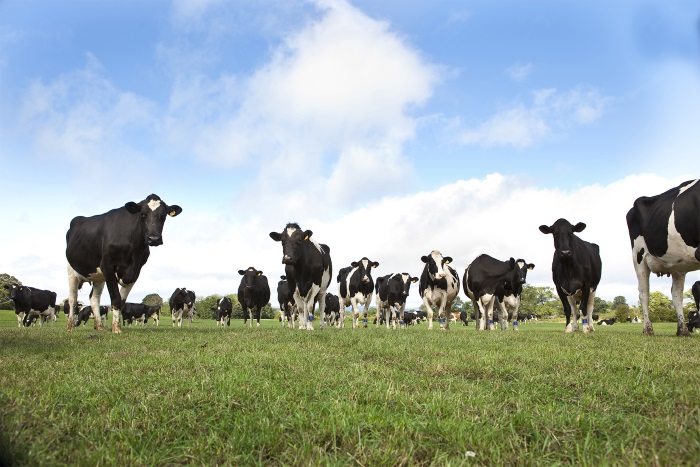Fullwood has launched a new pedometer-based fertility monitoring system which offers extremely accurate heat detection as well as enabling herd managers to easily recognise underlying conditions such as cystic ovaries, embryonic losses and non-cycling cows.
The new VITALITY system, which has been designed and developed by Fullwood’s in-house engineers and software technicians, offers two levels of animal observation and identification: the Vitality NOW system is a standalone activity monitoring and heat detection system, while the dual purpose Vitality PLUS system also enables electronic identification of individual cows for milking or out-of-parlour feeding purposes.
Both versions of the new Vitality system link to Fullwood’s Crystal herd management software and use a 3D accelerometer housed within a robust, sealed-for-life ‘tag’. Each tag has up to 400-metre line-of-sight wireless range which enables activity data to be remotely captured from any in-range animal.
This long-range capability makes the new pedometers ideally suited to indoor herds where lactating cows spend 100% of their time within the capture radius of the hub. The new pedometers are also equally suited to grazing herds thanks to each tag’s ability to store data for up to 48 hours. The pedometers are also ideal for indoor heifer rearing systems.
The new tags attach to the cow’s leg via a specially designed, easy to use strap, which locks securely into place. The sealed units have a battery life of up to eight years and automatically download data to Fullwood’s Crystal herd management software to provide herd managers with real-time updates.
Data collected by the pedometers includes overall activity based on the number of steps taken, number of ‘at rest’ periods and total ‘at rest’ time.
“Fullwood has been synonymous with leg mounted activity measuring systems for over 30 years,” explains John Baines, Technical Director for Fullwood. “Our research over those three decades has shown that pedometers are still the most accurate method for oestrus detection, so it is with delight that we are now able to offer our own in-house system.”
The new pedometers have undergone vigorous on-farm testing for more than 12 months, and have delivered excellent results from conventional parlours and robotic systems, both in terms of the reliability of data capture and the quality and interpretability of the information collected.
“The Vitality system has proven to be extremely accurate, not only in terms of predicting oestrus, but also in terms of enabling herd managers to remotely recognise underlying conditions such as cystic ovaries, embryonic losses and non-cycling cows,” Mr Baines continues. “And with a download range of up to 400m, the new systems offer an effective solution for even the most extensive dairying set-ups.”
Unlike other systems, which might only capture activity data twice or three times a day, (for example when the cow enters the milking parlour) Vitality provides updates throughout the day and night, giving herdsmen and herd managers an even more accurate picture of each cow’s current fertility status. “By raising the bar in this way, we have delivered a system which gives farmers every possible chance of improving the fertility status of their herd by ensuring cows are served at precisely the correct time,” Mr Baines adds.
“As the need for dairy farming systems to become more efficient grows ever stronger, so too does the need for professional farmers to have access to precise and up-to-date information regarding the health and fertility status of their herds. This new system takes activity monitoring and heat detection to the next level and will enable dairy farmers to make better informed, more accurate management decisions which will save their businesses time and money.”
Vitality NOW and Vitality PLUS pedometers are sold in kits which include 10 tags, 10 straps, 12 strap locking mechanisms and a strap cutting tool. A wireless hub, which can communicate with up to 250 pedometers, is also supplied: for more than 250 cows, the system is easily scalable by adding additional hubs. For grazing based systems, or for farmyards where cows are housed out of range of the base hub, additional antennae can be added to ensure data is regularly captured around the clock.


